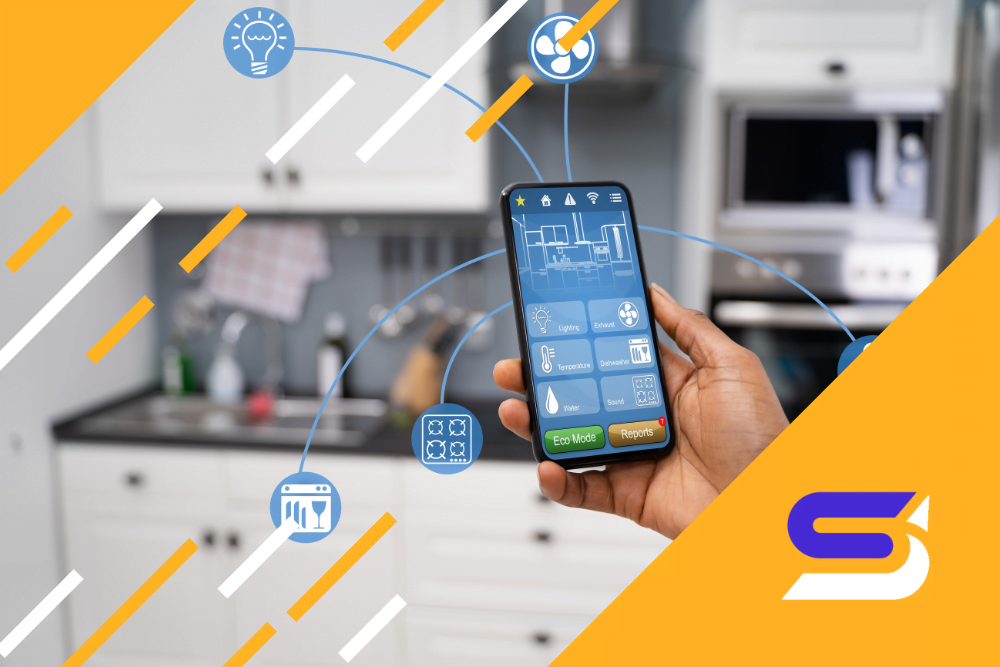Selecting a smart home ecosystem is a significant choice. If you choose to go for it, you will have to live with your choice for a very long time. If you’re just starting on your journey to make your smart home, we can help you to make a wise choice.
After this article, you will be able to make a strong decision about how to choose the best smart home ecosystem for your house. You can control all of your different devices, including lights, locks, garage door openers, thermostats, security cameras, and more, from a mobile device.

Smart home hub enables you to link every single, smart home appliance. For instance, a smart home hub can order your lights to switch off and your thermostat to enter eco mode when your smart lock is locked. It’s a vital tool for building a smart, automated home.
Best smart home devices can perform many additional things, although some are more effective than others.
What is a Smart Home Ecosystem?
Steps to Build a Smart Home Ecosystem
1. Decide on a Smart Home Hub
A smart home hub serves as the brain for your entire ecosystem of smart home gadgets. Using the hub, you may wirelessly connect to your gadgets and operate them with voice control or smartphone commands.
Most hubs also have a smartphone app that enables you to automate your home, add new devices, and set schedules. The Amazon Echo, Google Home, and Apple HomeKit are a few of the well-liked hubs.
A smart home hub is a fantastic place to start if you’re new to smart home tech. That’s because you may gradually expand your ecosystem by adding gadgets.
Our Top Picks:
2. Add Smart Speakers
Because they are considerably easier to use, smart speakers like the Amazon Echo, Google Home, and others are swiftly emerging as potential centers for the smart home.
Smart Speakers, however, cannot easily manage the more intricate automation that typical smart home hubs can. Smart speakers use the software through their works with Alexa and Work with Google Assistant programs to connect your devices rather than depending on radios to read the device’s protocols.
Once Alexa or Google has added a device, you may start controlling it with your voice. This means that you can manage multiple devices at once by grouping them.
A few years back, Amazon released the Echo Plus with a built-in Zigbee radio. Since then, Amazon has included the Zigbee hub in succeeding Echo smart speakers, including the 4th-generation Echo and the Echo Show 10.
They are thus a cross between a traditional hub and a voice assistant. The advantage of this is that you can connect Zigbee devices directly to your Echo, eliminating the need for the ecosystem hubs that companies like Philips Hue require.
Our Top Picks:
3. Add a Smart Wifi Router
A variety of Smart Home Ecosystems can be automated, such as turning lights off and on, adjusting the thermostat, and opening and closing doors. A Smart Wifi Router allows you to control all of these devices from your smartphone. With a Smart Wifi Router, you can worry less that your home is connected and secure, even when you’re away.
You need a separate WiFi network for your smart home technology. You can take full advantage of your smart home technology while also enhancing your cybersecurity and expanding the bandwidth available on your home network. If you want to create a dedicated smart home network, your options range from adding a guest network to switching to Z-wave or ZigBee connectivity.
Our Top Picks:
4. Choose Smart Lighting Options
A smart home ecosystem consists of a network of devices that work together to automate and manage your home. Smart Lights is one of the most popular product of a smart home, and for a good reason. Smart Light bulbs can be controlled with your smartphone or voice assistant, set schedules and timers, and even create custom lighting scenes.
There are a few factors to consider when choosing smart lighting for your home. First, you’ll need to decide which platform you want to use. There are many different options available, so research to find the one that best fits your needs. Next, you’ll need to choose the type of lighting you want. Several options are available, including LED, WiFi, and Bluetooth. And the final step is how you want to operate your lights. No matter your needs, there’s a smart lighting solution that’s perfect for you.
Our Top Picks:
5. Invest in a Smart Security System
Our Top Picks:
6. Choose Smart Cleaning Devices
Smart home gadgets like smart vacuums are an important part of a smart home system because they can make it easier for you to maintain a tidy home. Choose smart cleaning devices that are compatible with your android device or apple devices in your ecosystem so you can create a seamless and scheduled timetable that works for you.
Of course, while the scheduling may assist you in maintaining control, it can make the work easier. You’ll still need to put in some effort to maintain your house spotless.
Time-saving, smart cleaning tools can assist you with your duties. You can swiftly clean your home with the help of these tools, which include smart vacuums and all-in-one cleaning systems.
Our Top Picks:
7. Add a Smart Thermostat
The easiest method to reduce your energy costs is installing a smart thermostat, one of the best solutions available today. By automatically altering your home’s temperature per your daily schedule, smart thermostats can help you save money.
They can also provide real-time energy usage data to see exactly how much energy you’re using and where you can make adjustments to save even more money.
Our Top Picks:
8. Choose Smart Kitchen Appliances
Today, everything in your home—from your lightbulbs to your refrigerator—can be controlled by apps and voice assistants. Your daily routine could be drastically transformed with a smart kitchen appliance like a smart coffee machine that remembers your unique coffee preferences.
So, when selecting smart kitchen appliances, there are a few things to consider. Think about what you want the appliance to fulfill first. You should pick an appliance that provides the features you need as there are a wide variety of functions accessible. Next, consider how you’ll use the device.
Third, take your budget into account. Make sure the smart kitchen equipment you choose is affordable because it can be quite pricey. Finally, read reviews to get an idea of what other people think of the appliance you’re considering. With these things in mind, you’ll be able to choose a smart kitchen appliance that is perfect for your needs.
Our Top Picks:
9. Automatic Shades and Blinds
By investing in smart shades and blinds, you won’t have to worry about manually opening or closing your blinds when you wake up or return home at night. This is a more modern solution than the manual blinds you’re currently using.
Without a remote, these blinds and shades will open independently when you want them to. Compared to the ones you are using now, they are affordable and simpler to operate.
Our Top Picks:
Conclusion
A smart home ecosystem is a collection of different smart home devices operated by a single, smart home platform. Many different smart home platforms are available, so deciding which smart home ecosystem is right for you can be challenging. The most popular smart home ecosystems include Amazon Alexa, Apple HomeKit, Google Home, Nest, and Samsung SmartThings.
You can keep an eye on your house from anywhere in the world thanks to smart security solutions from businesses like Ring and Nest. This makes it possible for you to monitor your house while on a business trip to ensure everything is alright. Smart security devices can also let you know if there are any possible issues inside or outside your house. We sincerely hope you have liked reading about smart home devices.
Tags: Guide



































